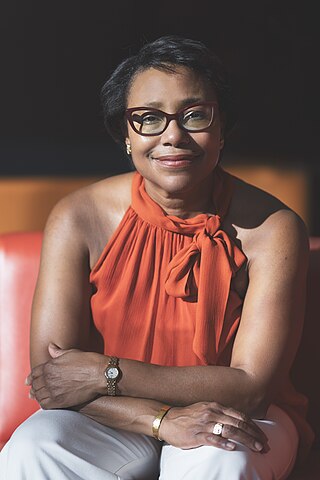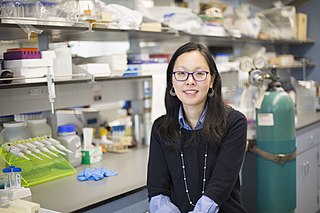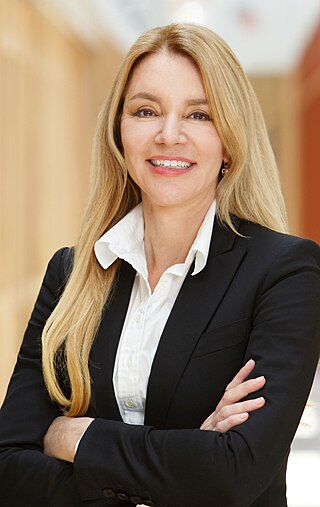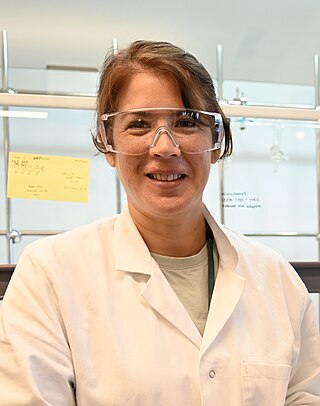
Molecular engineering is an emerging field of study concerned with the design and testing of molecular properties, behavior and interactions in order to assemble better materials, systems, and processes for specific functions. This approach, in which observable properties of a macroscopic system are influenced by direct alteration of a molecular structure, falls into the broader category of “bottom-up” design.
An electrochromic device (ECD) controls optical properties such as optical transmission, absorption, reflectance and/or emittance in a continual but reversible manner on application of voltage (electrochromism). This property enables an ECD to be used for applications like smart glass, electrochromic mirrors, and electrochromic display devices.

Ryoo Ryong FRSC is a distinguished professor of chemistry at KAIST in Daejeon, South Korea. He was the head of the Center for Nanomaterials and Chemical Reactions, an Extramural Research Center of the Institute for Basic Science. Ryoo has won a variety of awards, including the Top Scientist and Technologist Award of Korea given by the South Korean government in 2005. He obtained the KOSEF Science and Technology Award in 2001 for his work on the synthesis and crystal structure of mesoporous silica.

Paula Therese Hammond is an Institute Professor and the Vice Provost for Faculty at the Massachusetts Institute of Technology (MIT). She was the first woman and person of color appointed as head of the Chemical Engineering department. Her laboratory designs polymers and nanoparticles for drug delivery and energy-related applications including batteries and fuel cells.

Kim Kimoon is a South Korean chemist and professor in the Department of Chemistry at Pohang University of Science and Technology (POSTECH). He is the first and current director of the Center for Self-assembly and Complexity at the Institute for Basic Science. Kim has authored or coauthored 300 papers which have been cited more than 30,000 times and he holds a number of patents. His work has been published in Nature, Nature Chemistry, Angewandte Chemie, and JACS, among others. He has been a Clarivate Analytics Highly Cited Researcher in the field of chemistry in 2014, 2015, 2016.

Cheon Jinwoo is the H.G. Underwood Professor at Yonsei University and the Director of the Center for Nanomedicine, Institute for Basic Science (IBS). As a leading chemist in inorganic materials chemistry and nanomedicine Cheon and his group research chemical principles for the preparation of complex inorganic materials. He has been a Clarivate Analytics Highly Cited Researcher both in the field of chemistry in 2014, 2015, 2016 and cross-field in 2018. He is a fellow of the American Chemical Society, Royal Society of Chemistry, and Korean Academy of Science and Technology, a senior editor of Accounts of Chemical Research and an editorial advisory board member of Journal of Materials Chemistry, Nano Letters and Materials Horizons.
Martina Heide Stenzel is a Professor in the Department of Chemistry at the University of New South Wales (UNSW). She is also a Royal Australian Chemical Institute (RACI) University Ambassador. She became editor for the Australian Journal of Chemistry in 2008 and has served as Scientific Editor and as of 2021, as Editorial Board Chair of RSC Materials Horizons.

This is a list of women chemists. It should include those who have been important to the development or practice of chemistry. Their research or application has made significant contributions in the area of basic or applied chemistry.

Yueh-Lin (Lynn) Loo is a Malaysian-born chemical engineer and the Theodora D. '78 and William H. Walton III '74 Professor in Engineering at Princeton University, where she is also the Director of the Andlinger Center for Energy and the Environment. She is known for inventing nanotransfer printing. Loo was elected a Fellow of the Materials Research Society in 2020.

Eugenia Eduardovna Kumacheva is a University Professor and Distinguished Professor of Chemistry at the University of Toronto. Her research interests span across the fields of fundamental and applied polymers science, nanotechnology, microfluidics, and interface chemistry. She was awarded the L'Oréal-UNESCO Awards for Women in Science in 2008 "for the design and development of new materials with many applications including targeted drug delivery for cancer treatments and materials for high density optical data storage". In 2011, she published a book on the Microfluidic Reactors for Polymer Particles co-authored with Piotr Garstecki. She is Canadian Research Chair in Advanced Polymer Materials. She is Fellow of the Royal Society (FRS) and a Fellow of the Royal Society of Canada (FRSC).

Irshad Hussain is a Pakistani scientist in the field of chemistry and among the few pioneers to initiate nanomaterials research in Pakistan.
Eilaf Egap is an adjunct assistant professor of Materials Science at Rice University. She works on imaging techniques and biomaterials for early diagnostics and drug delivery. She was a Massachusetts Institute of Technology MLK Visiting Scholar in 2011.
Erin Baker Lavik is a professor of chemical, biochemical, and environmental engineering at the University of Maryland, Baltimore County. Lavik develops polymers and nanoparticles that can protect the nervous system. She is a fellow of the American Institute for Medical and Biological Engineering.

Jin Kim Montclare is a Professor of Chemical and Biomolecular Engineering at New York University. She creates novel proteins that can be used in drug delivery, tissue regeneration, and medical treatment. She is a 2019 AAAS Leshner Leadership Fellow and has been inducted into the AIMBE College of Fellows.

Eva M. Harth FRSC is a German-American polymer scientist and researcher, and a fellow of both the Royal Society of Chemistry and the American Chemical Society. She is a full professor at the University of Houston and director of the Welch Center for Excellence in Polymer Chemistry.
So-Jung Park 박소정(朴昭靜) is a professor of chemistry at Ewha Womans University, Republic of Korea. Her research considers the self-assembly of nanoparticles and functional molecules for biomedical and optoelectronic devices. She serves as Associate Editor of ACS Applied Materials & Interfaces and Nanoscale.
Kwang Hwa Chung is a South Korean physicist who has served as president of the Korea Research Institute of Standards and Science, the Korea Basic Science Institute, and the Korean Vacuum Society. She has received the Moran Medal of the Order of Civil Merit, as well as other honors and awards for her scientific research and work to promote professionalism for women in STEM fields.

Bin Liu is a chemist who is Professor and Provost's Chair at the National University of Singapore. Her research considers polymer chemistry and organic functional materials. She was appointed Vice President of Research and Technology in 2019. She was awarded the 2021 Royal Society of Chemistry Centenary Prize.

Christine Luscombe is a Japanese-British chemist who is a professor at the Okinawa Institute of Science and Technology. Her research investigates polymer chemistry, organic electronics, organic photovoltaics and the synthesis of novel materials for processable electronics. She serves on the editorial boards of Macromolecules, Advanced Functional Materials, the Annual Review of Materials Research and ACS Applied Materials & Interfaces.

Lilo Danielle Pozzo is an American chemical engineer who is a professor of chemical engineering at the University of Washington. Her research considers the development, measurement and control of molecular self-assembly. She is interested in the realization of materials for energy storage and conversion. Pozzo serves on the editorial board of the Royal Society of Chemistry journal Digital Discovery.














